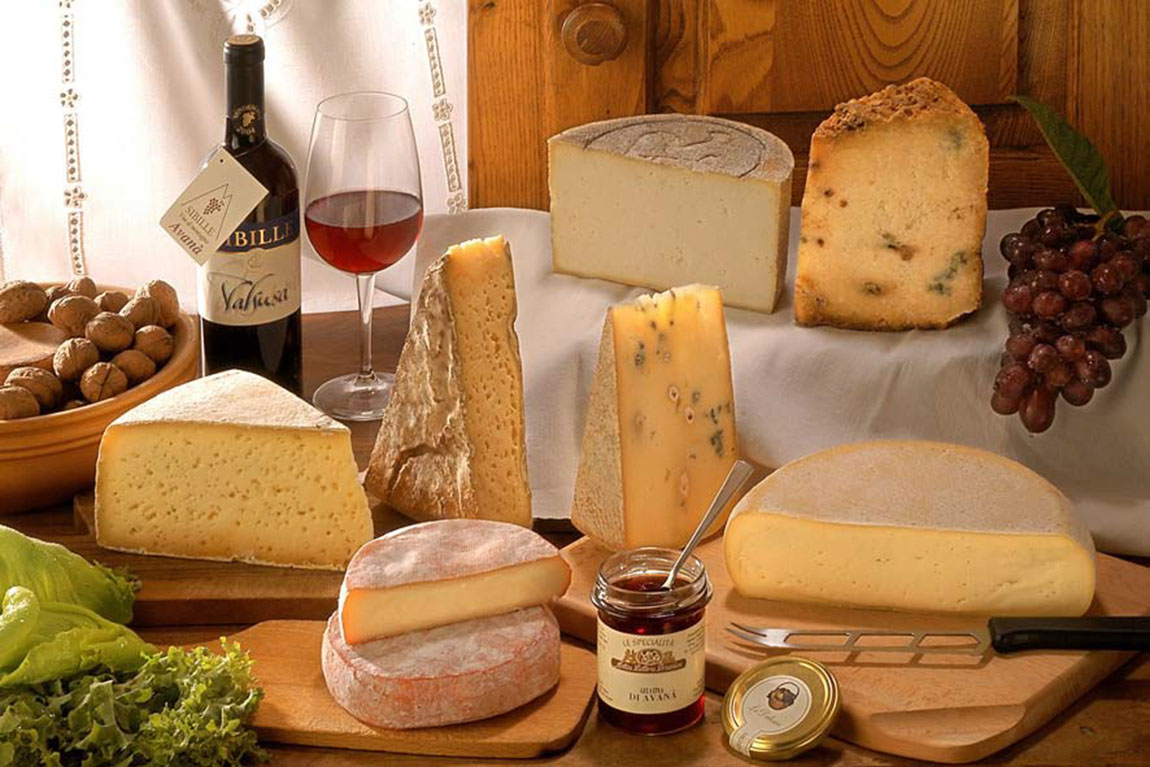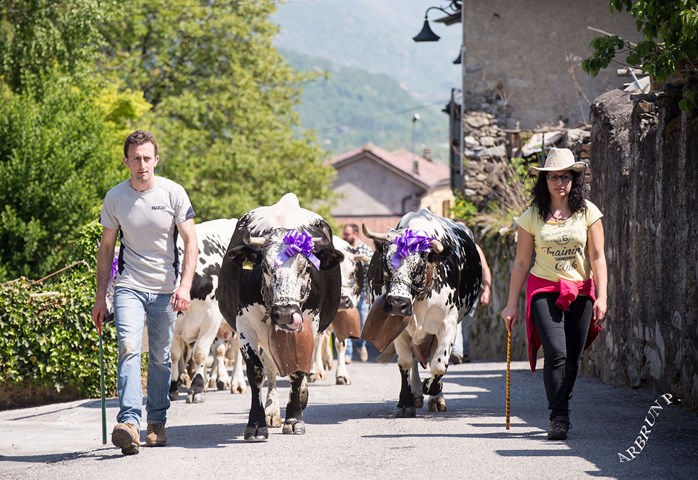The breeding of dairy cows is one of the typical activities of the Susa Valley and today, even though they are no longer bought in village dairies, milk and its derivatives (butter, ice cream, yoghurt) can be bought directly from the producing farms or on the main markets in the area.
The main product of this sector, however, remains cheese, both cow and goat. The Susa Valley has a varied and diversified production, where alpine cheeses are characterised by the altitude of the pastures and their maturation, and by the intensity of their fragrances and aromas.
Plaisentif, defined as the cheese of the violets, is produced on alpine pastures during the first 15-20 days of alpine grazing, when the different plant species, and in particular the violets, are in bloom. It is processed like a toma cheese but matured for at least 80 days in the alpine pasture, so it is sold from the last week of September. The paste is soft but with characteristic eye formation and a very persistent scent of fresh grass and flowers.
Red Rind Cheese used to be commonly called Reblochon, but since it obtained AOC in France (Appelation d'Origine Controllée) it can no longer be sold under this name. It has Savoy origins and is produced on the Moncenisio plateau, in Val Cenischia and surrounding areas. Reblocher means 'second milking' in the local Savoy dialect and the term is said to derive from a kind of fraud on the part of the shepherd towards the owner of the alpine pasture: during weighing, the herdsman, in order to obtain less milk, would give orders to his employees not to finish milking, which would end once the owner had left. In this way, milk rich in fat was obtained, from which soft cheeses of short or medium maturation were produced, of great value and much appreciated.
The cheese is made exclusively from cow's milk and has a soft, straw-white or yellow, unctuous paste with slight eye formation.
Murianen, which has always been produced in the Upper Susa Valley and Upper Maurienne, Savoie, took this name because the people of the Susa Valley who travelled to France for various types of trade found large quantities of it at the Maurienne fairs. In the valley, on the other hand, production was mainly for self-consumption and little was marketed. The importance and delicacy of this great cheese is testified by the Jacini investigation at the end of the 19th century, which dedicates an accurate description to it, also organoleptically, and demonstrates its ancient origins in common with Savoy. Its processing involves the particularity of preparing two pastes, the first coarser and the second finer, which are then mixed together. The resulting paste is then left to acidify before being salted and pressed.
It is a large cheese, produced exclusively in alpine pastures from cow's milk, it has a crumbly, piquant and grainy paste with blue streaks due to the presence of mould.

The typical cheese of the valley is Toma del Lait Brusc. In past centuries, butter was sold in the valley markets at very high prices, so it was a highly profitable product for the shepherds of the alpine pastures, who produced a lot of it by letting the milk acidify naturally and then removing the fat from it. The leftover milk from this process was not wasted, as it was made into cheese from the 'brusco' milk, the brusc, in fact.
Toma del Lait Brusc is a cheese with a hard and rough compact rind, dark yellow in colour, with a crumbly texture and, if matured for a long time, with blue veins.
Sheep's milk cheeses are little or not present in the Susa Valley, while goat's milk cheeses, obtained from indigenous breeds, are of considerable interest. They are very widespread in the Susa Valley mountains, often mixed with cow's milk and sometimes pure.
Cevrin, a typical Coazze cheese, is made from mixed goat's milk (Camosciata delle Alpi breed) and cow's milk, to which liquid calf rennet is added. Production takes place exclusively during the grazing period, from March to November, then Cevrin matures for at least three months (in alpine pastures, in natural caves) and requires demanding maintenance: the cheeses must in fact be turned and cleaned daily. They have a round shape with a rough, moist rind and an amber colour. The paste is slightly grainy with a yellow colour towards the outside and white inside.



